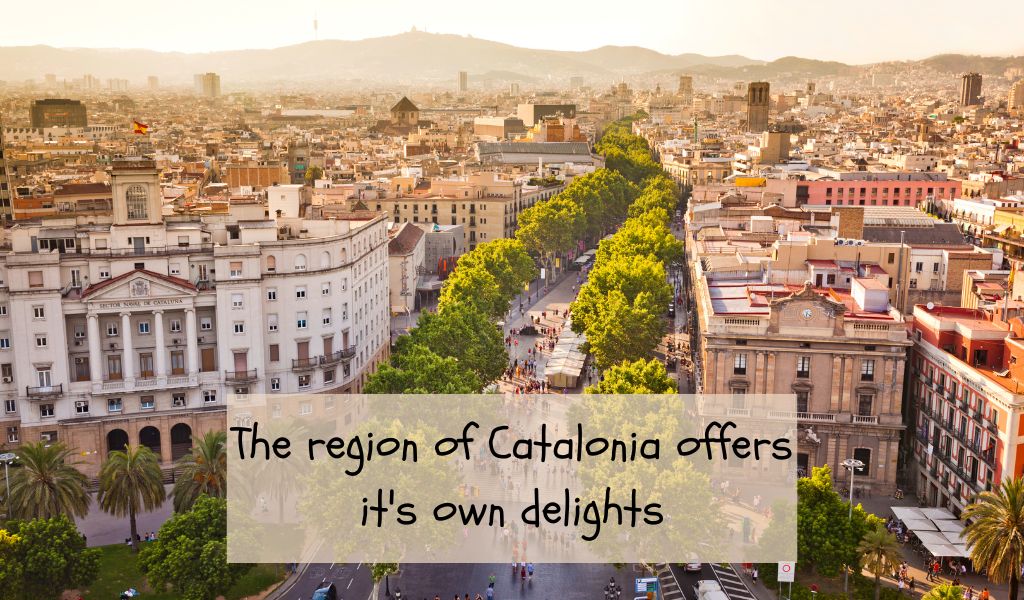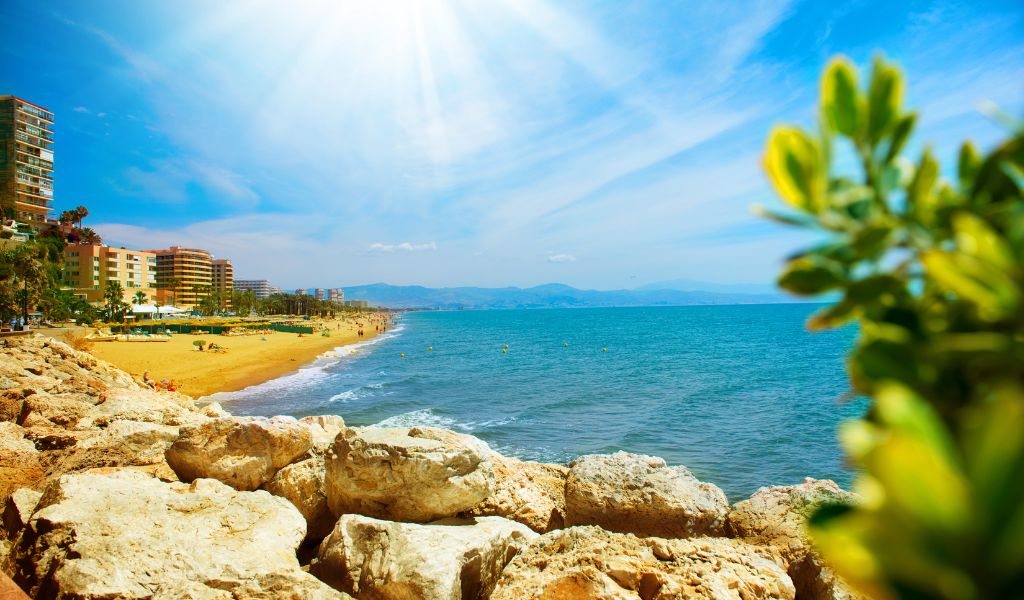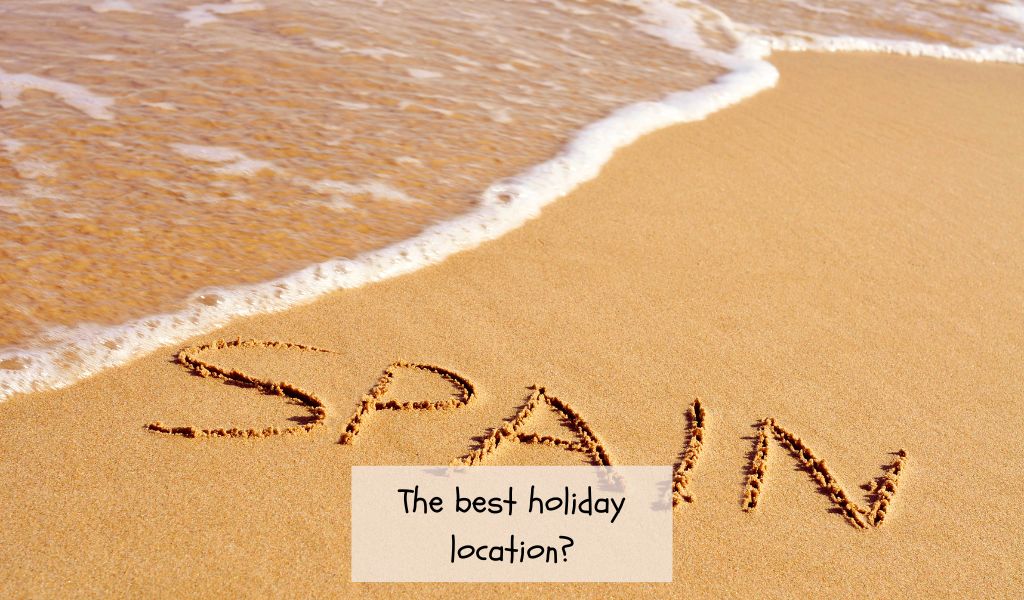Spain is a top destination for travelers from around the world.
From its stunning beaches to its vibrant cities and cultural attractions, Spain has something for everyone.
Whether you are looking for a relaxing beach holiday or an action-packed city escape, you will find it in Spain.
With varied regional climates and activities available across the country, there is no shortage of options when choosing where to go on your Spanish holiday.
In this blog post, we’ll explore some of the best regions in Spain for holidays and discuss why they are great destinations.
We’ll also look at budget accommodation options, local cuisine, culture and activities that can be enjoyed while visiting each region.
So read on to discover the perfect place in Spain for your next vacation.
Spain is a top holiday destination
For an unbeatable holiday, look no further than Spain.
Home to some of the world’s most stunning beaches and awe-inspiring landscapes, it is easy to see why the warmth and passion of Spanish culture continues to captivate visitors from all corners of the globe.
From buzzing cities to tranquil rural experiences, vibrant nightlife to historical marvels – there is something in store for everyone.
With a wealth of delicious cuisine, diverse attractions, and unbeatable climate, there really is no better place to experience life through a different lens and make a few lifelong memories along the way.
The different regions of Spain and their attractions
Spain is divided into 17 autonomous regions, each with its own unique history, culture, and attractions. Here are a few of the most notable regions and their main attractions:
Andalucia
This region is famous for its stunning architecture, including the Alhambra palace in Granada and the Giralda tower in Seville.
Andalucia is also known for its flamenco dancing and rich Moorish history.
Catalonia
Located in the northeast, Catalonia is home to the city of Barcelona and its iconic architecture, including the works of Antoni Gaudi such as the Sagrada Familia.
The region also boasts beautiful beaches, medieval villages, and ski resorts in the Pyrenees Mountains.
Madrid
As the capital of Spain, Madrid offers a mix of modern and historic attractions, including the Royal Palace, the Prado Museum, and the Retiro Park.
The city is also famous for its nightlife and delicious cuisine.

Galicia
This northwestern region is known for its green landscapes, ancient Celtic heritage, and pilgrimage site of Santiago de Compostela.
Galicia is also famous for its seafood and white wine.
Castilla y Leon
This central region encompasses the cities of Salamanca, Segovia, and Valladolid and is famous for its historic architecture and castles, including the Alcazar of Segovia.
These are just a few examples of the diverse regions of Spain and their attractions. Each region offers a unique experience, making Spain a popular destination for travelers.
What’s the weather like?
When planning a trip to Spain, you may be wondering what kind of weather to expect.
The good news is that the country experiences all four seasons throughout the year—but depending on where you go, temperatures and conditions can vary significantly.
Let’s take a closer look at the weather in each of Spain’s different regions.
The Mediterranean Coast and Islands
The Mediterranean coast of Spain is one of the most popular tourist destinations in the country, thanks to its mild climate.
During summertime, temperatures can reach up to 30°C (86°F), while winters are mild with temperatures rarely dropping below 10°C (50°F).
The coastal areas also experience very little rain throughout the year—making it an ideal spot for beach vacations.
Central Plateau
In contrast, the central plateau experiences hotter summers with temperatures reaching up to 40°C (104°F) during peak season.
Winters here tend to be cold and snowy with temperatures often dropping below 0°C (32°F).
This region receives higher levels of precipitation than other parts of Spain—so make sure you bring an umbrella if you plan on visiting during rainy season.
Northern Region
The northernmost regions of Spain have a much cooler climate than other parts of the country.
Summers are usually quite pleasant with temperatures hovering around 25°C (77°F), while winters can be especially cold—with temperatures often falling below 0°C (32°F).
This region experiences more rain than other parts of Spain, so visitors should come prepared for wet weather if they plan on vacationing here.
What activities are available in each region?
Spain offers something for everyone – no matter what type of activities you’re looking for.
From stunning beaches to snow-capped mountains, there’s a variety of landscapes and attractions in this country.
Beaches
Spain is home to some of the most beautiful beaches in Europe.
The Mediterranean coast boasts pristine white sands and crystal clear waters.
The Canary Islands are also a great option for beach vacations, with their volcanic black sand beaches and warm waters.
Mountains
Head to the Pyrenees Mountains in Catalonia or the Sierra Nevada range in Andalusia if you’re looking for outdoor adventures like skiing, snowboarding, and hiking.
Cities
Spain is full of vibrant cities such as Madrid, Barcelona, and Valencia.
Each city offers a unique culture with its own architecture, cuisine, and attractions.
Nature
Spain is an incredibly diverse country with a variety of natural landscapes.
Visit the Picos de Europa National Park in Cantabria to explore lush forests and stunning mountain peaks.
Or take a drive through the Rías Baixas region in Galicia to witness stunning coastal scenery.
No matter what type of activities you’re looking for, Spain has something to offer everyone! With its diverse landscapes and attractions, this country is sure to provide an unforgettable experience.
Wildlife
Spain boasts a diverse range of wildlife, from the magnificent Iberian lynx to the majestic imperial eagle.
Explore one of Spain’s many nature reserves and you may spot some of these fascinating creatures in their natural habitat.
The Alcazar of Segovia is also home to an incredible variety of birds, making it a great destination for bird-watchers.
With its varied landscapes, spectacular scenery, and interesting wildlife, Spain is an ideal destination for nature lovers.
How much does it cost to stay?
Madrid and Central Spain
Madrid is the capital of Spain and home to many attractions, making it a great place for a vacation.
There are several budget-friendly accommodation options in Madrid, such as hostels and Airbnbs.
Hostel prices start from €20 per night, while Airbnb prices range from €30-€45 depending on the location and amenities offered.

Catalonia
The autonomous region of Catalonia is known for its architectural wonders such as Gaudi’s Sagrada Familia in Barcelona.
Accommodation in Catalonia includes hotels, hostels, and Airbnbs.
While hotels can be expensive with prices ranging up to €150 per night, there are plenty of budget-friendly options available starting from €30 per night.
Hostels are also an affordable option with prices starting from €20 per night while Airbnb ranges from €35-€50 depending on the amenities offered.
Basque Country
The Basque Country is located in northern Spain along the coast of the Bay of Biscay.
It offers stunning views and plenty of cultural attractions for tourists to explore.
Hotels here can range up to €150 per night but there are budget-friendly options starting at around €40 per night.
Hostels offer another affordable option with prices ranging from €20-€25 while Airbnbs cost between €35 – €45 depending on the amenities provided by the host.
Andalucia
Andalucia is one of the most popular tourist destinations in Spain due to its vibrant culture and incredible architecture.
For those looking for an affordable place to stay here, Hostal El Cortijo provides simple but comfortable rooms from €20 per night as well as access to a swimming pool and terrace area with stunning views over Granada cityscape.
Galicia
Galicia is located in the northwest corner of Spain, and it is known for its lush green landscapes and picturesque villages.
One great budget-friendly option for this region is A Monte da Ulla Hostel & Suites, which offers both private rooms and dorm beds from just €9 per night.
The hostel also has a restaurant that serves traditional Galician cuisine and stunning views of the surrounding countryside.
What types of food & culture can you experience in Spain?
Spain is renowned for its diverse and delicious cuisine, heavily influenced by regional ingredients, history and traditions.
Here are a few popular local dishes and cultural experiences to enjoy while on holiday:
Paella: A traditional Valencian dish made with rice, saffron, and a variety of ingredients such as chicken, rabbit, and vegetables.
Tapas: Small dishes that are meant to be shared and often served in bars. Examples include Patatas bravas (spicy potatoes), Gambas al ajillo (garlic prawns), and Chorizo al vino (chorizo in wine).
Seafood: With a long coastline, Spain is known for its fresh seafood dishes, including grilled sardines, octopus, and clams.

Churros: A sweet pastry, typically served for breakfast, with a crispy exterior and soft interior. It is often served with a cup of hot chocolate.
Flamenco: A traditional Spanish dance form, characterized by intricate footwork, hand clapping, and guitar music. Flamenco can be experienced at bars, clubs, and cultural events.
Bullfighting: Although a controversial tradition, bullfighting is still a popular spectacle in some parts of Spain. Spectators can witness the bullfight in arenas known as “Plazas de Toros”.
Festivals: Spain is known for its lively and colorful festivals, such as La Tomatina (a tomato-throwing festival) and Running of the Bulls in Pamplona.
These are just a few of the local cuisine and cultural experiences that can be enjoyed while on holiday in Spain.
Why are some parts of Spain better than others for a holiday?
Spain is a diverse country with many different regions that offer something unique and special to travelers.
Some parts may be better than others for a holiday depending on the type of experience you are looking for.
For example, Catalonia is perfect for those who want to explore its vibrant culture, beautiful beaches, and amazing architecture.
The Basque Country is ideal for adventurers, offering stunning coastal and mountain views, plus plenty of outdoor activities.
Galicia is great for those who want to get away from it all and enjoy its tranquil countryside and picturesque villages.
Andalucia is perfect for experiencing traditional Spanish culture through its food, music, and dancing.

No matter what type of holiday you are looking for, there is something special to be found in each region of Spain.
In conclusion, Spain is an amazing destination for a holiday – and with its diverse regions, it has something to offer everyone.
From vibrant cities to peaceful villages, stunning landscapes, delicious food and plenty of cultural experiences – there is lots to explore and enjoy.
Depending on your preferences, some parts of Spain may be better than others – but wherever you decide to go, you are sure to have an unforgettable holiday experience!

